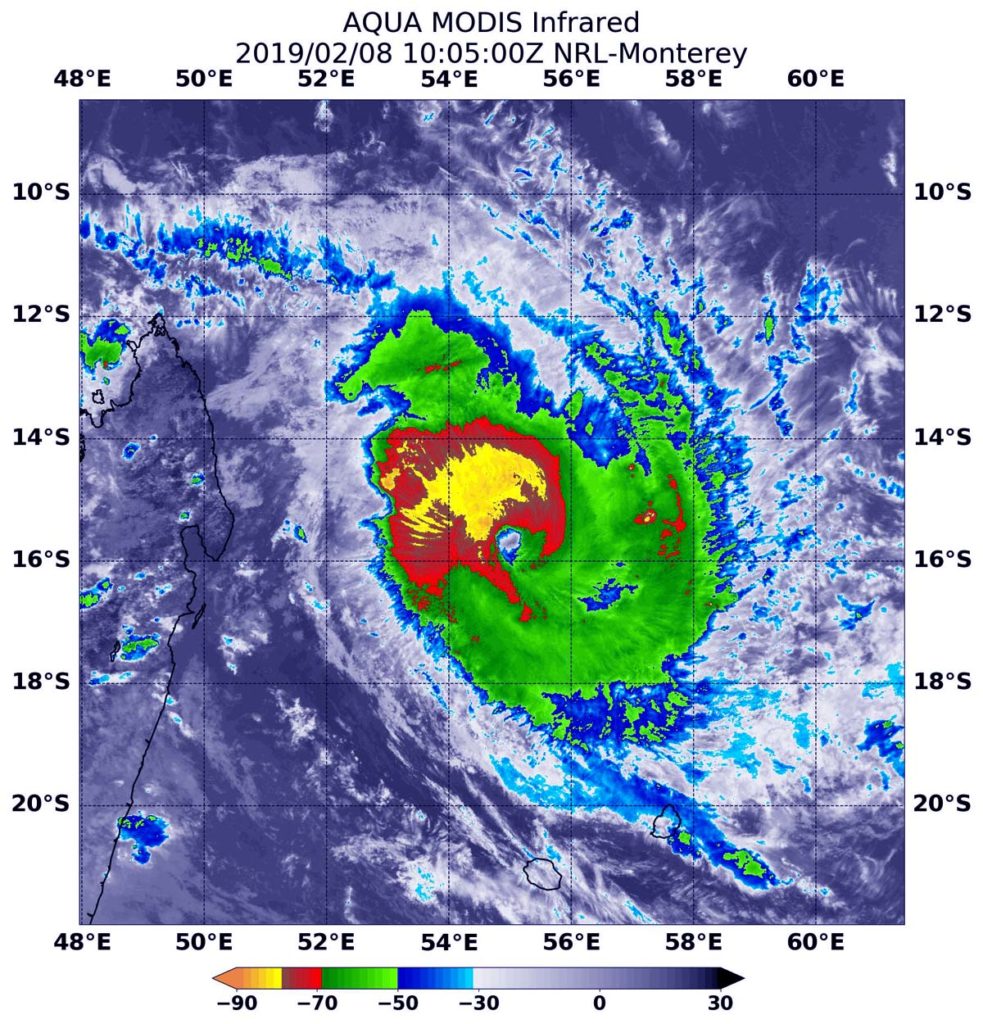Feb. 8, 2019 – NASA’s Aqua Satellite Finds Tropical Cyclone Gelena’s Strongest Side
NASA’s Aqua satellite passed over the Southern Indian Ocean and captured an infrared image of Tropical Cyclone Gelena that revealed strongest storms were northwest of the eye.

On Feb. 8, a tropical cyclone warning class 2 is in force at Mauritius and Rodrigues.
At 5:05 a.m. EST (1005 UTC) on Feb. 8 the MODIS instrument that flies aboard NASA’s Aqua satellite gathered infrared data on Tropical Cyclone Gelena. Infrared data provides temperature information. MODIS found coldest cloud top temperatures as cold as minus 80 degrees Fahrenheit (minus 62 Celsius) in storms in the northwestern quadrant, outside of the eye. NASA research has shown that cloud tops with temperatures that cold were high in the troposphere and have the ability to generate heavy rain.
At 10 a.m. EDT (1500 UTC), the center of Tropical Cyclone Gelena was located near latitude 15.7 degrees south and longitude 55.3 degrees east. That’s about 288 nautical miles north-northwest of Port Louis, Mauritius. Maximum sustained winds were near 105 knots (121 mph/194.5 kph) and strengthening.
The Joint Typhoon Warning Center noted that Gelena will strengthen to 130 knots (149.6 /241 kph) within 24 hours. Although a weakening trend will then begin, Gelena is forecast to have winds of about 120 knots (138 mph/222 kph) upon closest approach to Rodrigues on Feb. 9.
Rob Gutro
NASA’s Goddard Space Flight Center, Greenbelt, Md.
